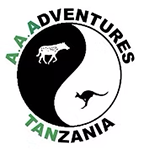Ngorongoro Simply Breathtaking
The Ngorongoro conservation area (NCA) is a unique protected area in the whole of Africa. It was established in 1959 and covers an area of 8,300 square kilometers. The multiple land use philosophy in the area is to maintain the peaceful co-existence of human and wildlife in a natural and traditional setting. Pastoralism conducted by the Maasai tribe, conservation of natural resources and tourism are the three main components that are given equal consideration. The main attraction is the Ngorongoro Crater, one of the seven natural wonders of Africa, covering 3% of the entire conservation area. It is the largest unbroken, un-flooded caldera in the world, formed when a towering volcano erupted and collapsed some three million years ago. The Ngorongoro crater has a depth of 600 meters, with a base area covering 256 square kilometers which stretches for 19 kilometers in diameter, and is home to some 30,000 different species of flora and fauna.
Apart from the main caldera, Ngorongoro also has two other volcanic craters namely Olmoti crater – famous for its spectacular waterfalls, and Empakai crater which at its base has an alkaline lake and its crater walls carpeted in primary indigenous montane forests. Other important features found in the NCA are the archaeological and palaeontological site located at Oldupai Gorge and the early human foot-prints that were discovered at Alaitole in Ngarusi area. Man and his ancestors have lived in the Ngorongoro eco-system for more than three million years. The NCA aims for the historic balance of people and nature in a way which has not been possible in many parts of the world. The NCA became a Man and Biosphere Reserve in 1971 and was declared a World Heritage Site by UNESCO in 1979.









